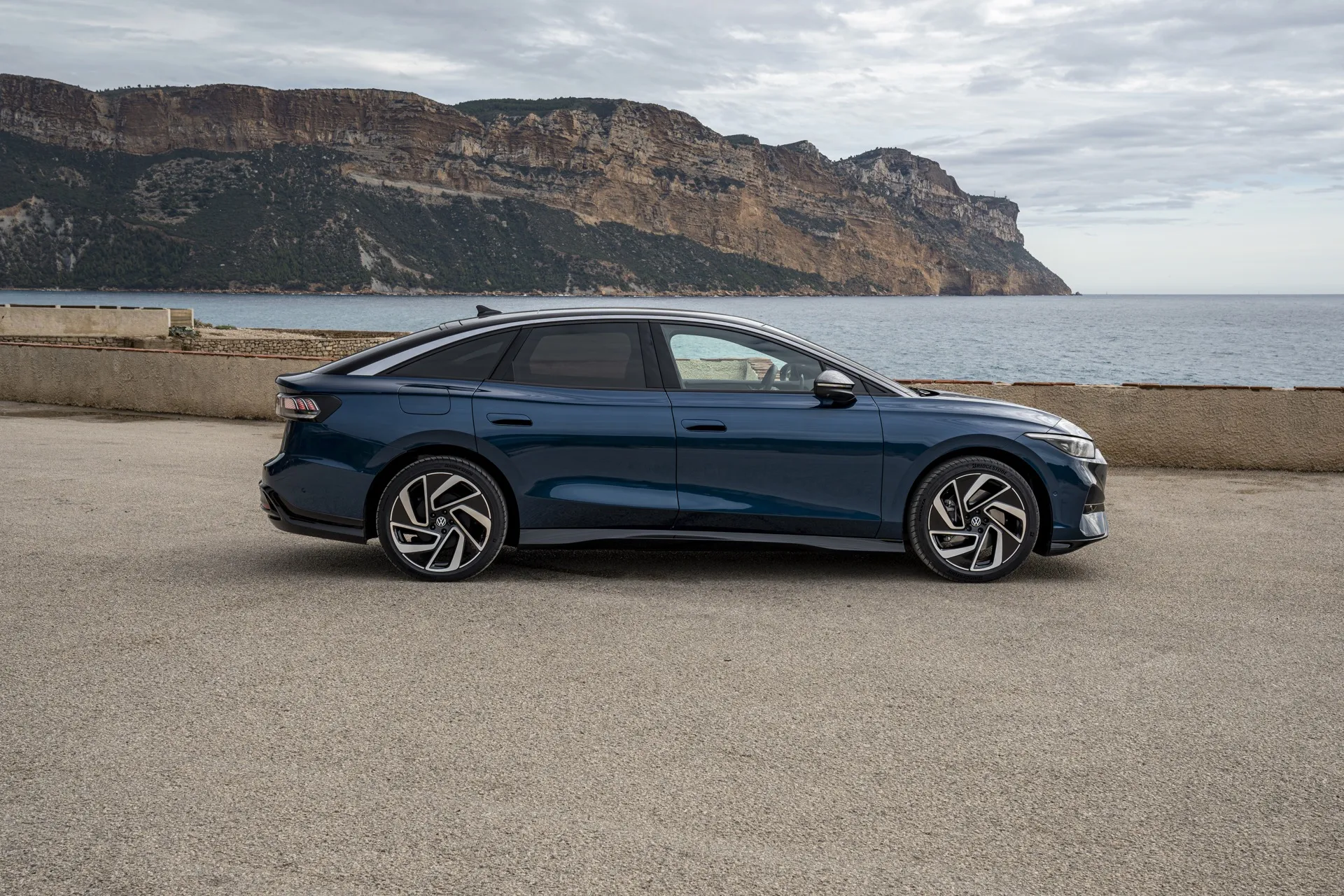The 2025 Volkswagen ID.7 encourages car shoppers to reconsider the car versus the crossover. The latest and longest offering in VW’s growing ID family of electric vehicles honors the classic touring car and modernizes it for the electric age. Standard with a head-up display, available with excellent massaging seats, and styled like an Audi fastback, the ID.7 also points Volkswagen into the premium segment.
After driving it through the hills of southern France beyond Marseille, the only remaining question about VW’s intent for the ID.7 is how much of it will migrate over to the North American market. The 2025 ID.7 arrives in the U.S. in the second half of 2024 with either single-motor rear-wheel-drive or with dual-motor all-wheel drive powertrains, both fed by a 77-kwh usable battery pack (82 kwh gross). VW wouldn’t commit to bringing the larger 85-kwh battery pack offered in Europe to the U.S.
We won’t know pricing or trims until next year, and our driving impressions are limited to the rear-wheel-drive model. We know it will be imported from Germany and not made alongside the related VW ID.4 in Chattanooga, Tennessee, so it won’t qualify for the federal EV tax credit.
Perhaps most importantly, we know that the long hatchback makes for a comfy, quiet, and clean cruising car with lots of cargo space. Its charms, like its design, are understated in the Volkswagen way. A chrome-like garnish accentuates how the roofline arcs into the tail like a fastback, where the hatch offers crossover-like cargo volume instead of a sealed-off trunk. Up front, a lower grille smiles between side air intakes, and a light bar binds the VW badge and runs through the thin LED headlights into a body line to the wrap-around LED taillights.
2025 Volkswagen ID.7
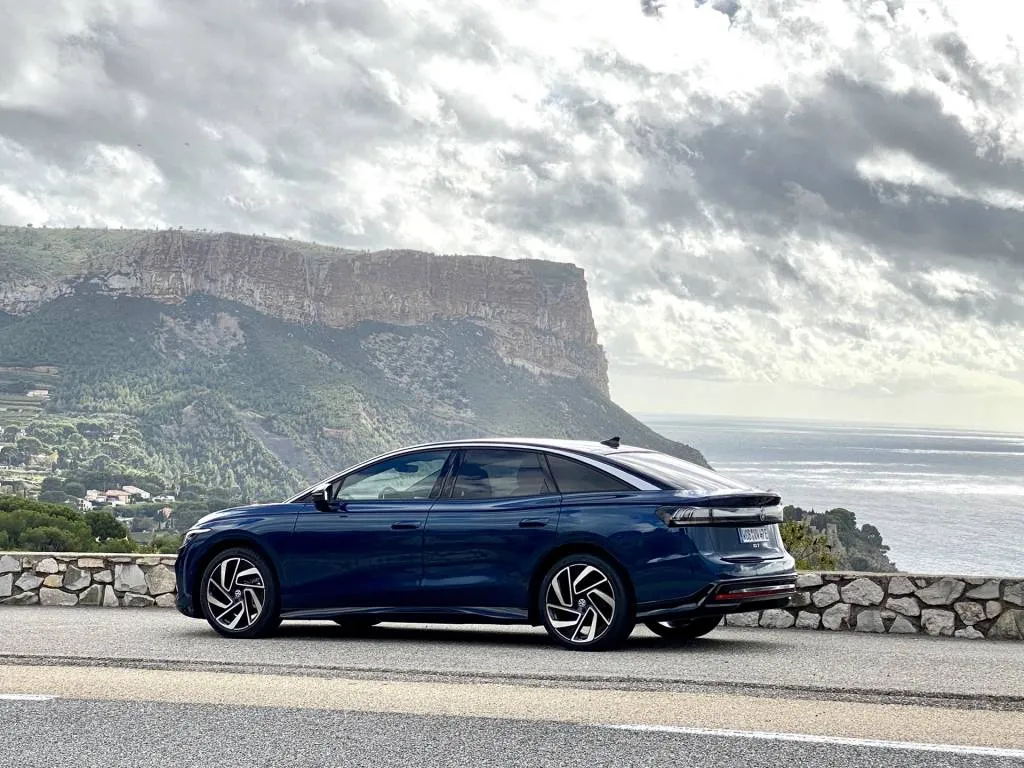
2025 Volkswagen ID.7
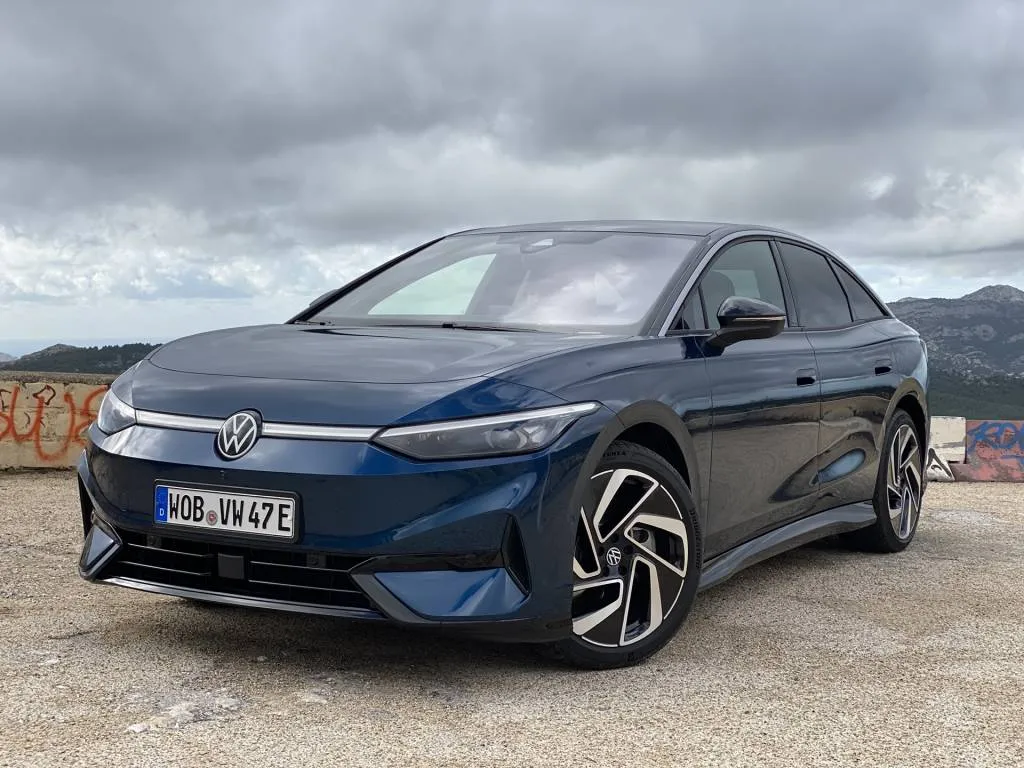
2025 Volkswagen ID.7
Its understated design, which is typical for VW, might not turn heads, but its efficiency should turn on brains. The design elements create a low 0.23 coefficient of drag, same as the Tesla Model 3 even though it’s sized more like the Tesla Model S. Consider it an Arteon for the electric age, but measuring four inches longer at 195.3 inches long and with a 5.1-inch longer wheelbase of 117.0 inches. Volkswagen says it’s the lowest slung model in its growing ID family of electric vehicles, but at 60.5 inches, it’s nearly four inches taller than the Arteon thanks in part to the flat battery pack that takes up vertical space in the floor.
How does the 2025 VW ID.7 drive?
A new motor and drive unit evolves from the system used in the ID.4. More windings and stronger magnets make it more potent with a rating of 210 kw and an output of 282 hp and 429 lb-ft of torque, up from 201 hp and 229 lb-ft in the ID.4. It makes the ID.7 more spirited than the ID.4, but it doesn’t leap off the line like other torque-rich EVs. The permanent magnet motor takes the ID.7 from 0-62 mph in 6.5 seconds.
All that torque requires a reduction gear, and the drive unit has a new inverter as well as both air- and water-cooling to improve efficiencies and reduce frictional losses. There’s plenty of punch once moving, and passing trailers or other slow moving traffic uphill is easy up until about 80 mph. The ID.7 tops out at 112 mph, which might affect Germans on the Autobahn more than North Americans.
Four drive modes—Eco, Comfort, Sport, and Individual—offer slight modulations that are more subtle than pronounced. Sport mode quickens the accelerator response (while Eco turns it to mush), tightens the steering, and firms up the available adaptive dampers, while the Individual mode offers more granularity in the touchscreen between Comfort and Sport settings.
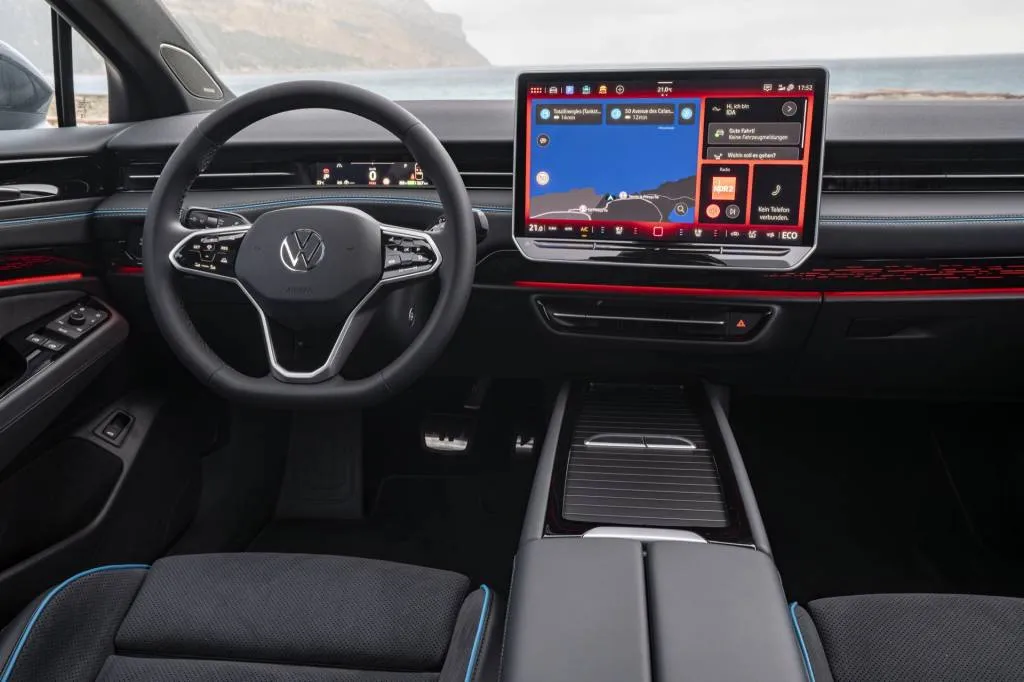
2025 Volkswagen ID.7
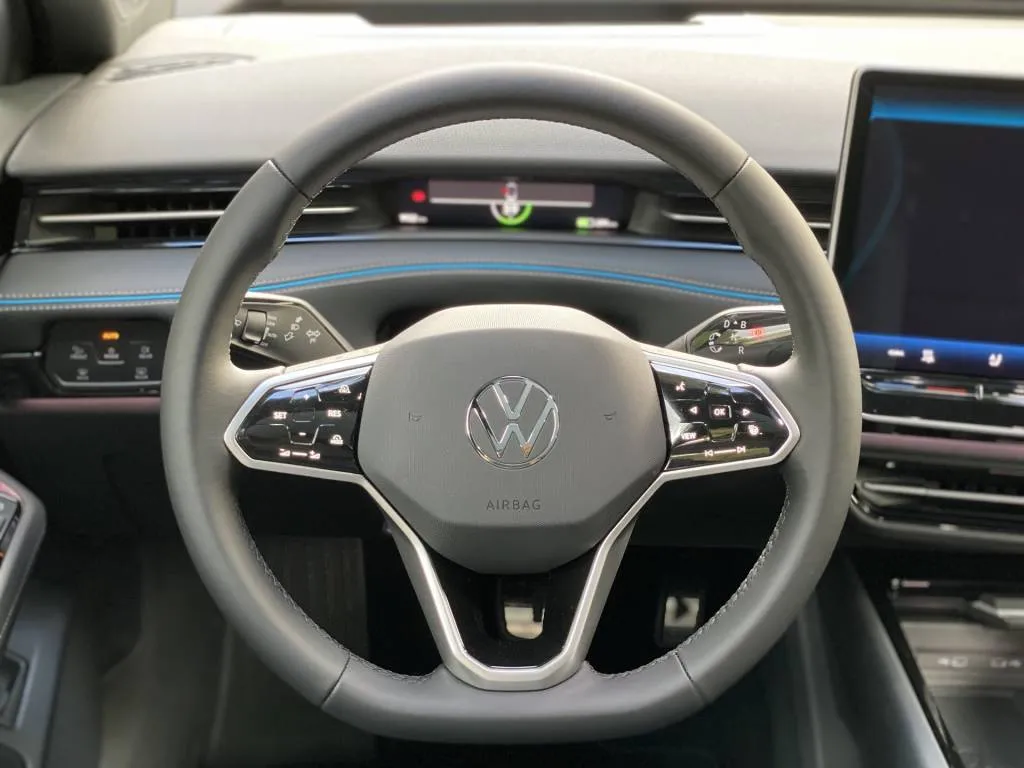
2025 Volkswagen ID.7
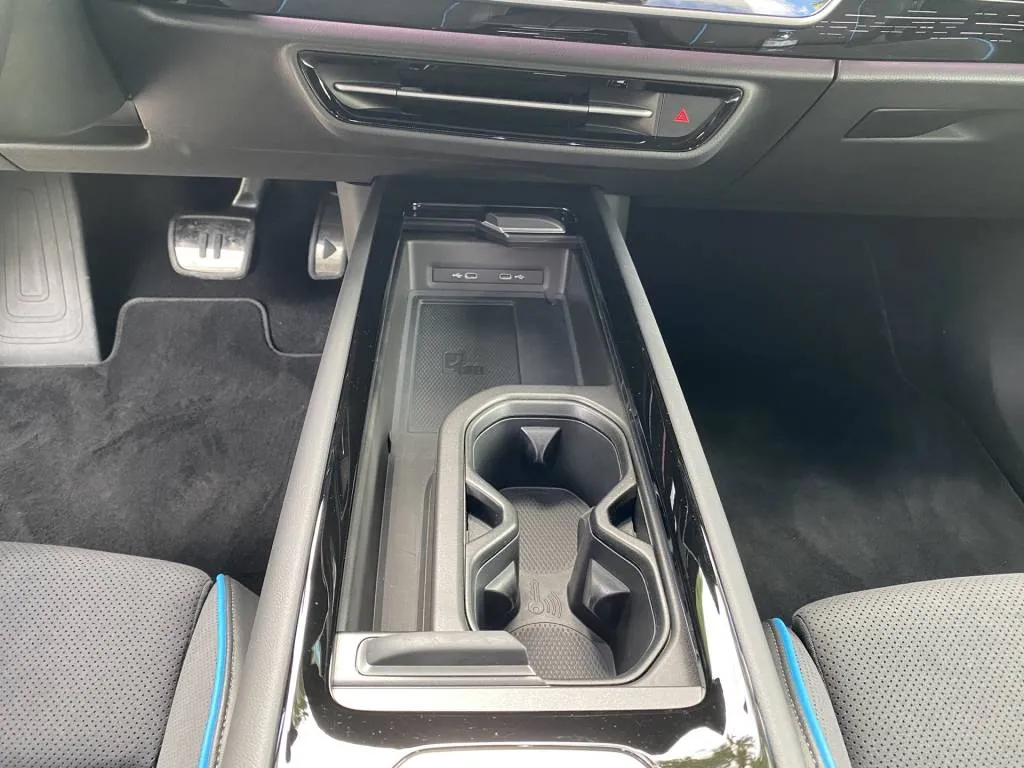
2025 Volkswagen ID.7

2025 Volkswagen ID.7
There’s no one-pedal driving, as VW relies on a lone regen brake setting of B on the column stalk. Since most of the braking happens up front and through the motor, VW still uses cheaper drum brakes on the rear wheels instead of disc brakes that VW says have more rolling resistance.
Responsive when called upon, the ID.7 doesn’t rely on quickness for its charms. Instead, the hatchback impresses with its quiet serenity and stately calm while cruising. Wind and road noise from the standard 19-inch alloy wheels don’t announce itself until above highway speed limits.
VW doesn’t offset the ID.7’s 4,788-pound curb weight with an air suspension, instead relying on front struts and a multilink rear suspension supplemented with available adaptive damping. It rides higher than most cars yet lower than electric crossovers, and the weight helps keep it planted. It doesn’t pitch forward under heavy braking, and the damping offsets some of the roll in corners. If seeking more power, consider the forthcoming dual-motor GTX model.
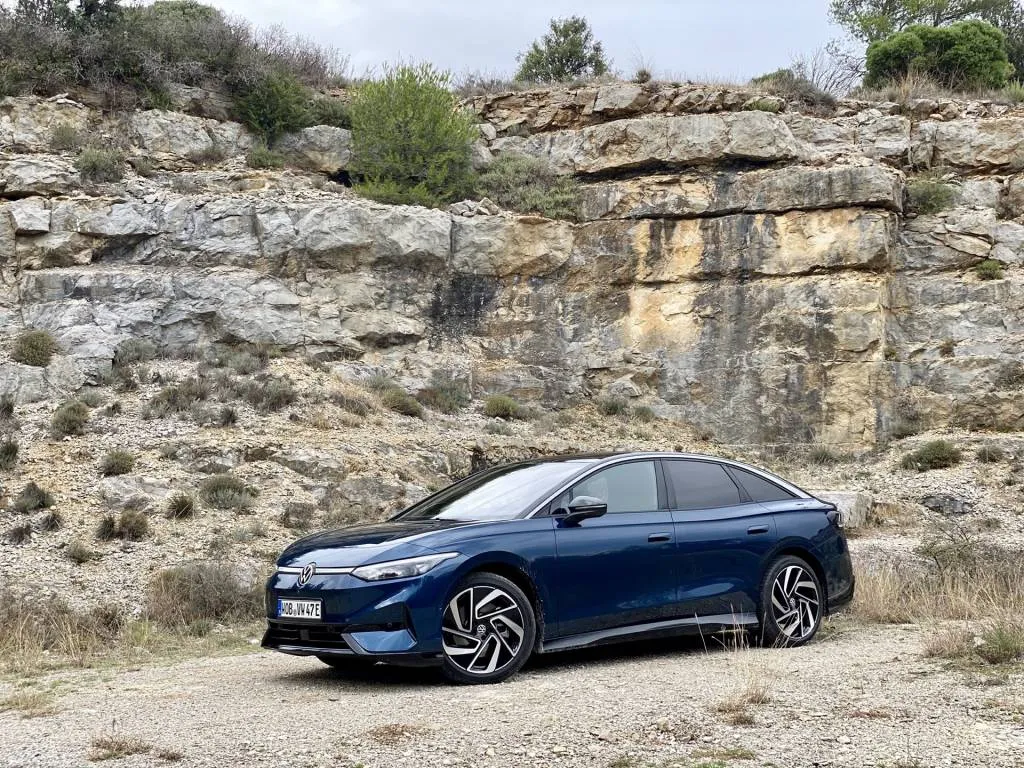
VW ID.7 cabin comfort and creature features
Built for comfort, the single-motor ID.7 also showcases the latest in VW’s cabin comfort. While heated power front seats come standard, my tester came with VW’s ergoActive bucket seats with massagers. These super comfy seats are filled with ten air cushions. They offer numerous massage settings that last as long as 20 minutes, and they help push the ID.7 into the luxury space.
The ID.7’s infotainment system and interface represent an improvement over the ID.4. Larger icons and a cleaner layout on the 15.0-inch touchscreen, as well as a more logical menu structure, lessen how much time is spent on the screen, and a configurable top bar serves as vehicle and drive mode controls, while the lower climate bar acts as hot buttons for the most common climate functions.

2025 Volkswagen ID.7
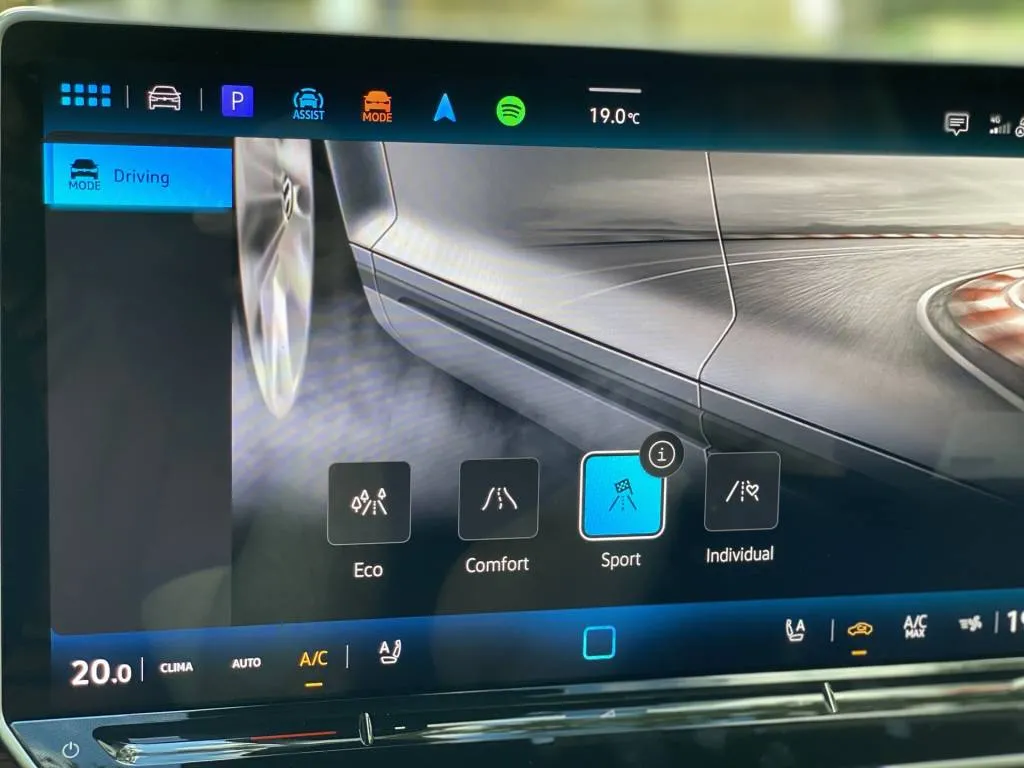
2025 Volkswagen ID.7
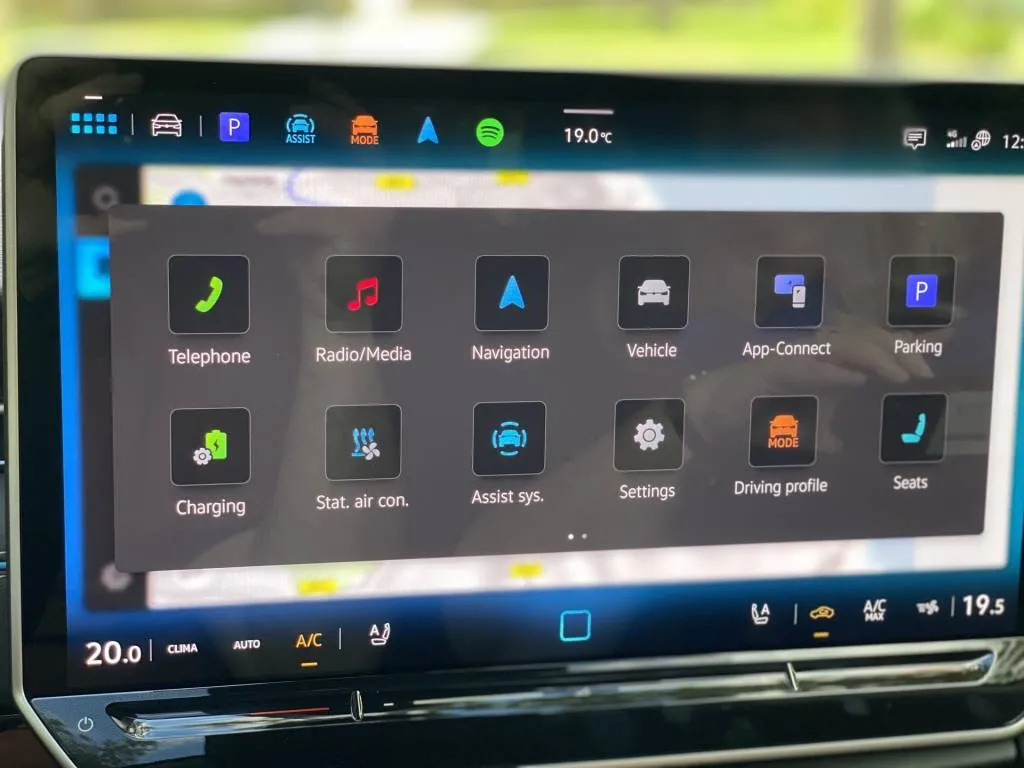
2025 Volkswagen ID.7
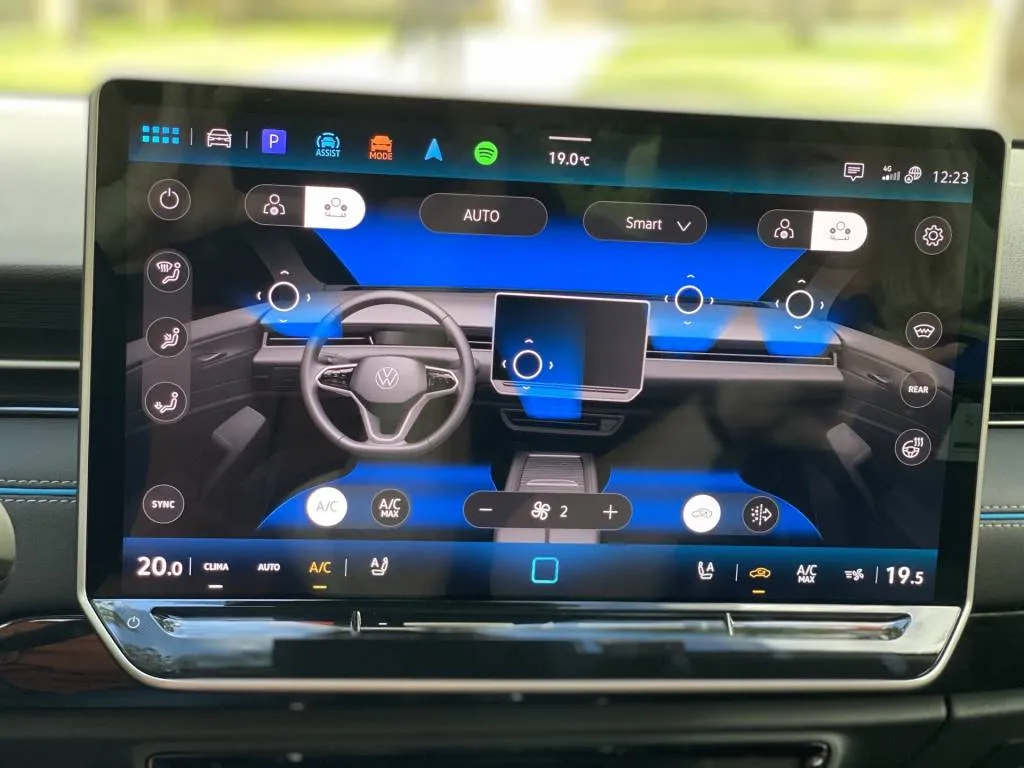
2025 Volkswagen ID.7
The climate control sliders below the touchscreen are backlit for better visibility, and they can be pressed down like a button so it’s easier to adjust the temperature while in motion. New voice commands localize the climate to certain areas as well. If your hands are cold, you can say “Hello ID” to awaken it, then “Warm my hands” or “My hands are cold” and the system will activate the heated steering wheel and point the vents toward the steering wheel area. If you say “my feet are cold,” the lower vents will activate. While you won’t need Rosetta Stone or Duolingo to get along, there is a learning curve and some accents and inflections (Canadian female, in particular), can inadvertently awaken it.
Climate dials and vent stalks are still easier than adjusting the vents through the voice commands or touchscreen. The advantage is a clean, uncluttered dash.
VW minimizes the digital instrument cluster as well, so it’s the size of a candy bar. It shows speed and state of charge, but most driving info resides in the standard head-up display. The augmented reality display mostly works well, but the blue lines in the flashing navigation guidance can get washed out while wearing polarized sunglasses.
Fortunately, VW provides a third visual trick for navigation guidance aside from the head-up display and touchscreen. A blue light bar at the interior cowl activates when the navigation is set; it blinks left to right if you need to get over for a ramp, or pulses blue on the right side if you need to make a right turn.
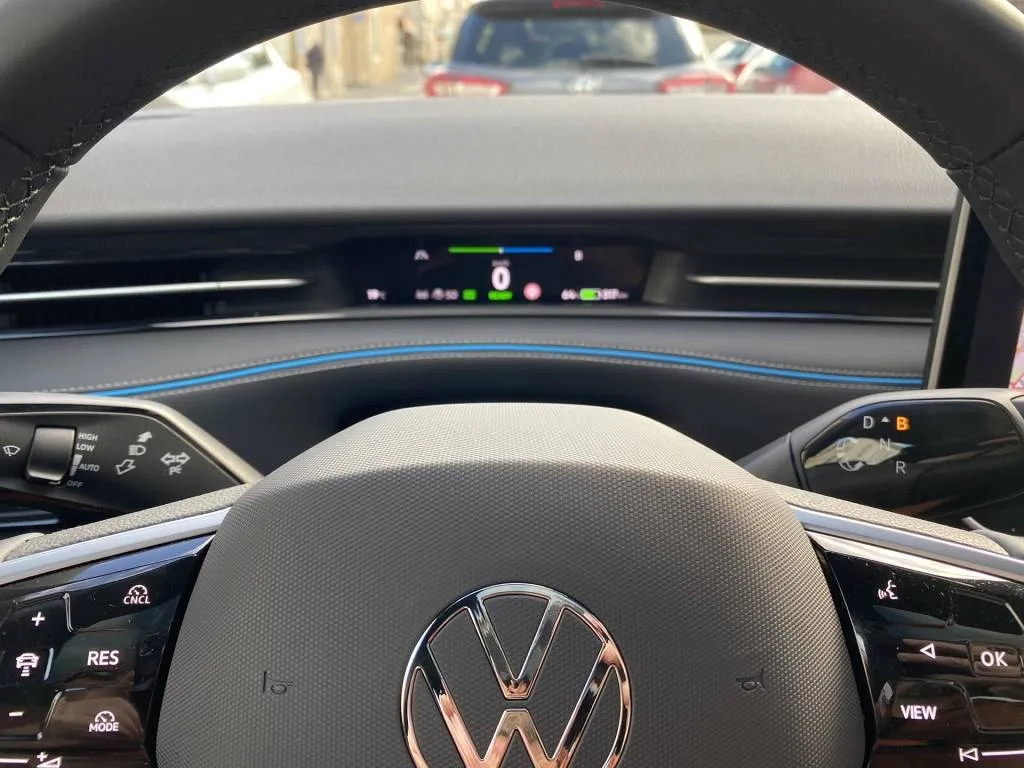
VW ID.7 hatchback design gives it versatility
The long 117.0-inch wheelbase, which is an inch longer than the Ioniq 6’s, makes for a roomy, open cabin. Wide door openings and a higher ground clearance than most cars (VW didn’t have that spec at press time) make getting in and out easy, and the rounded roofline doesn’t chop off heads in the spacious back seats of the Volkswagen ID.7. At 5-foot-8, I could stack a fist on my head and it didn’t hit the ceiling.
Four adults fit fine, and the rear middle seat is better used as a cupholder or as a pass-through for longer items in the hatch. The 60/40 split seats fold down from the seat tops or from a latch in the hatch, and even though it lacks the vertical height of a crossover, the hatch is deeper than wide, and expands from 18.8 cubic feet to a crossover-like 56.0 cubic feet with the rear seats down. The flat load floor can drop another two inches for more room, and two storage cubbies beneath can hold the charge cord, or it can be stowed in the attaché case-like front trunk area.

2025 Volkswagen ID.7
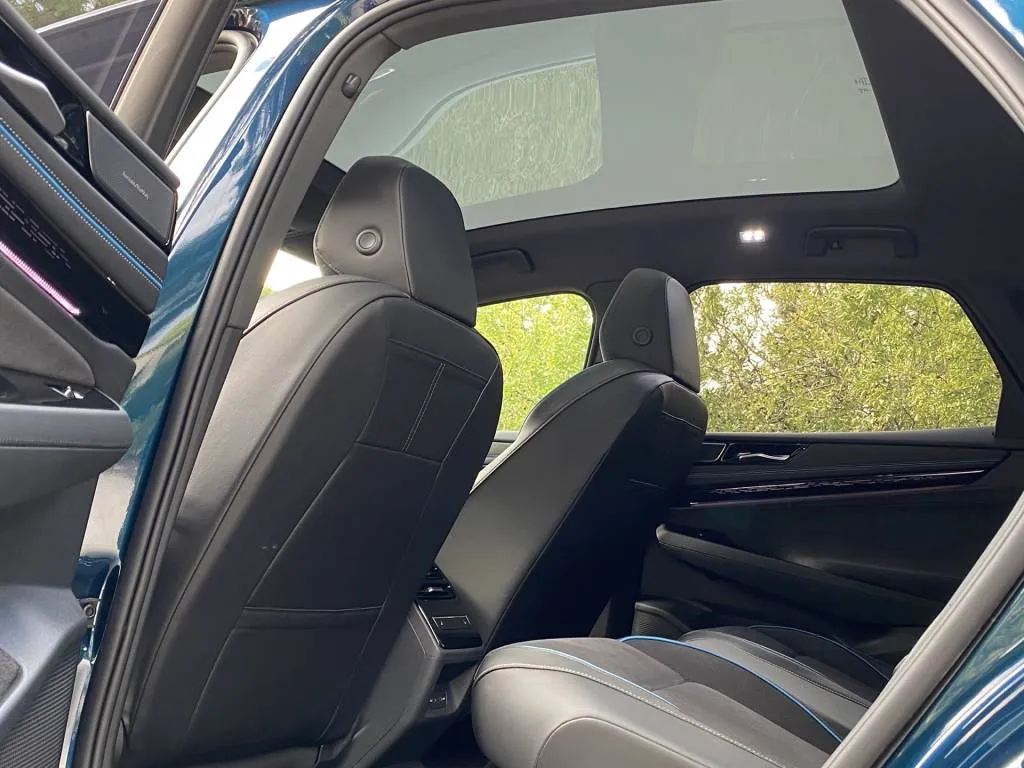
2025 Volkswagen ID.7
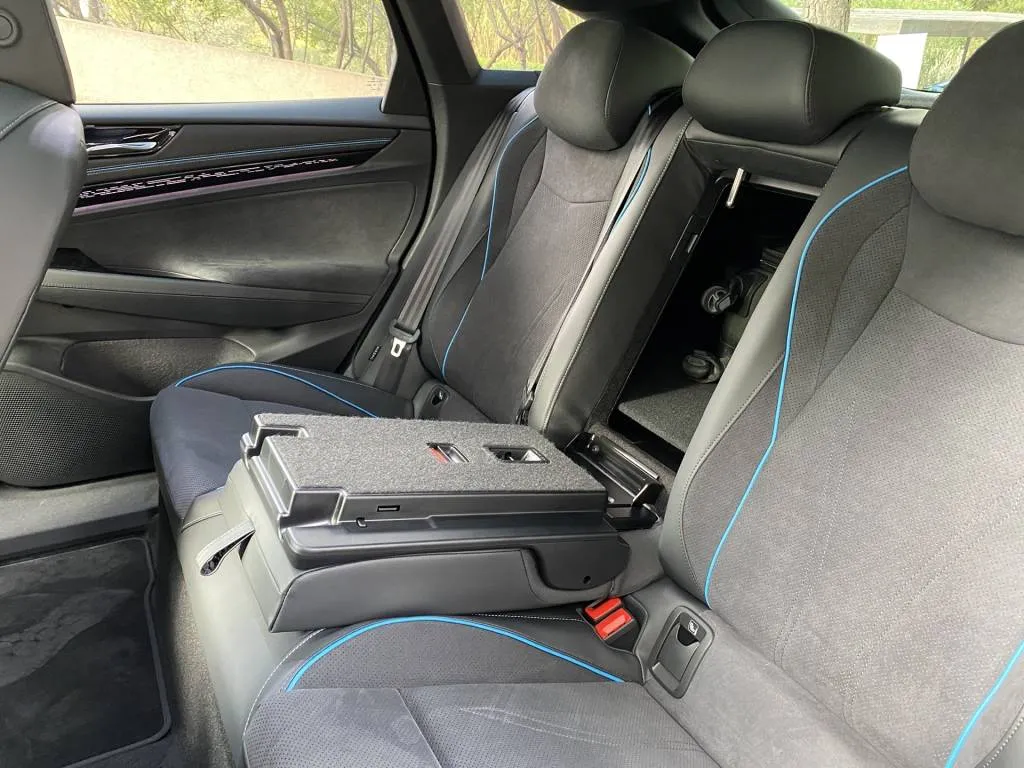
2025 Volkswagen ID.7
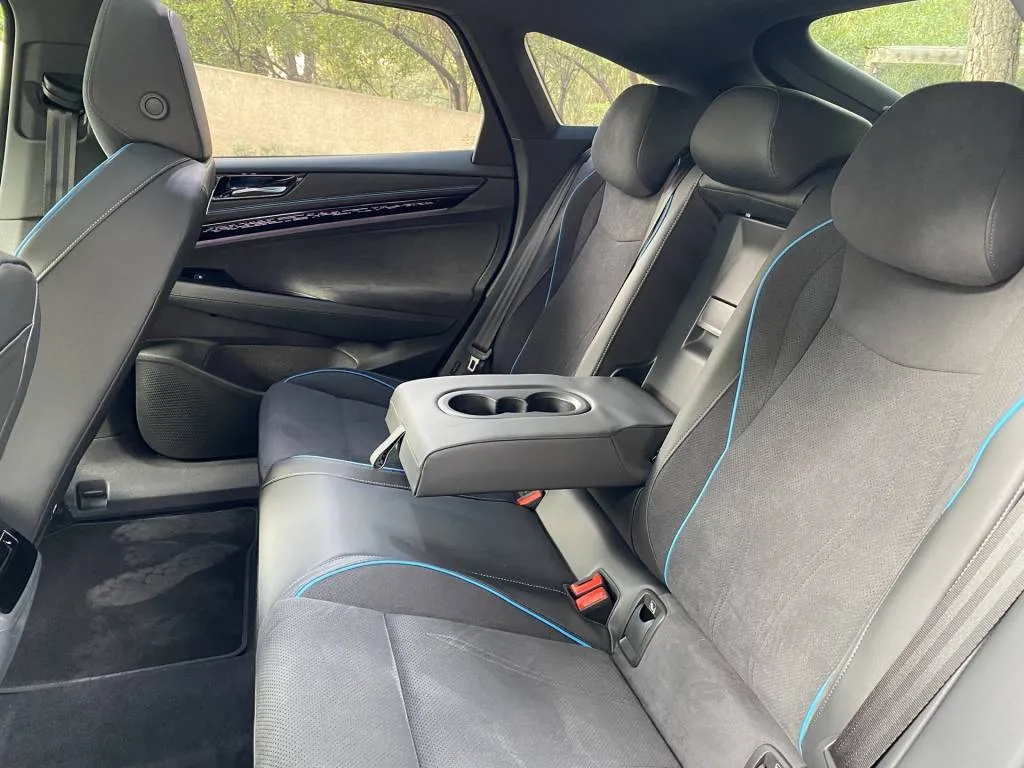
2025 Volkswagen ID.7
VW ID.7 questions
There’s a lot we don’t know about the ID.7 in the U.S. Based on what we do know, we expect a range of about 350 miles with the single-motor powertrain, just 11 miles shy of the Hyundai Ioniq 6. VW estimates that it will use about 15.2 kwh every 62 miles, which equates to an efficient rating of almost 4.1 miles per kwh. If it maintains that rate on EPA testing, it would be among the most efficient electric cars, alongside the Hyundai Ioniq 6 and Tesla Model 3.
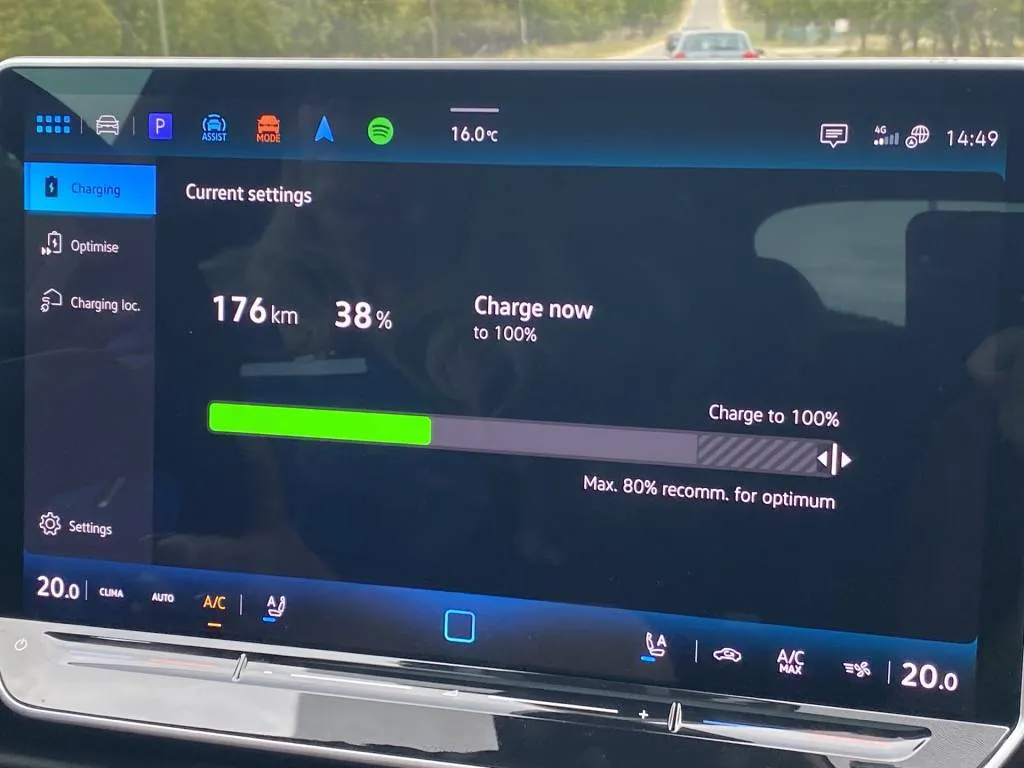
2025 Volkswagen ID.7
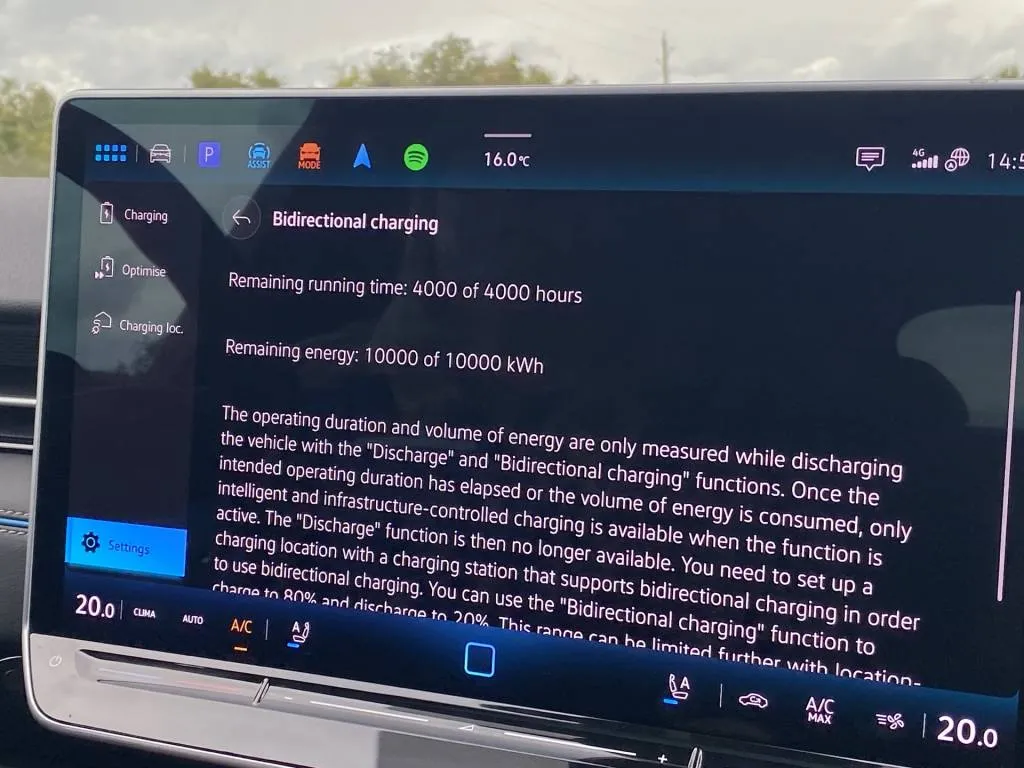
2025 Volkswagen ID.7
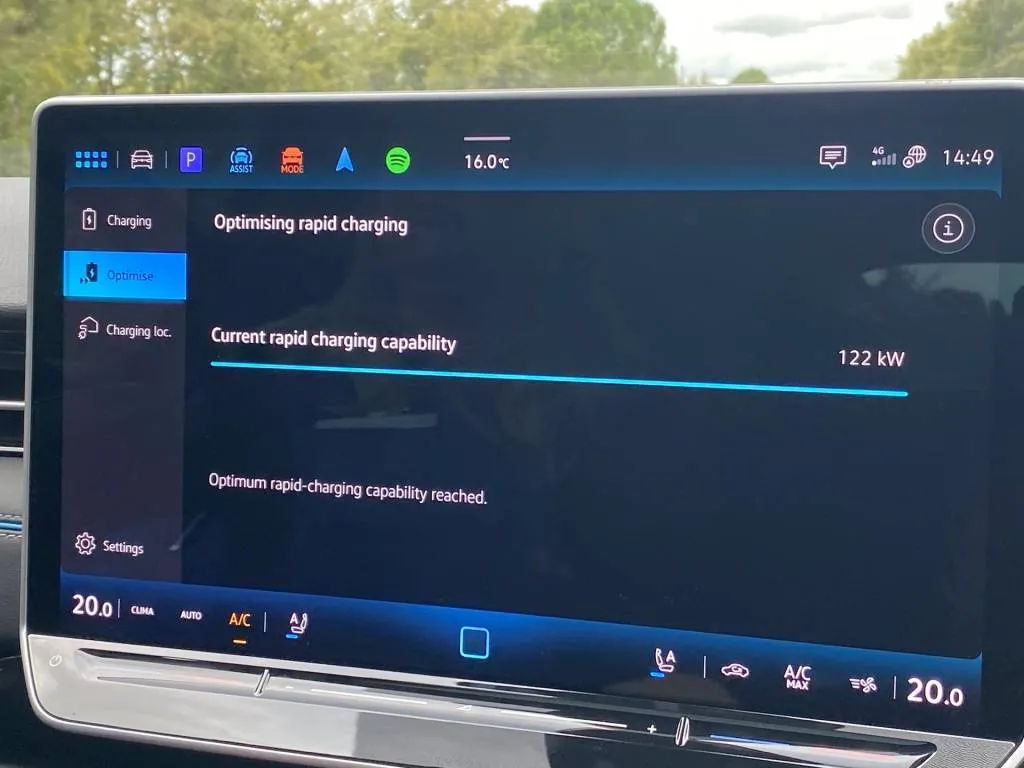
2025 Volkswagen ID.7
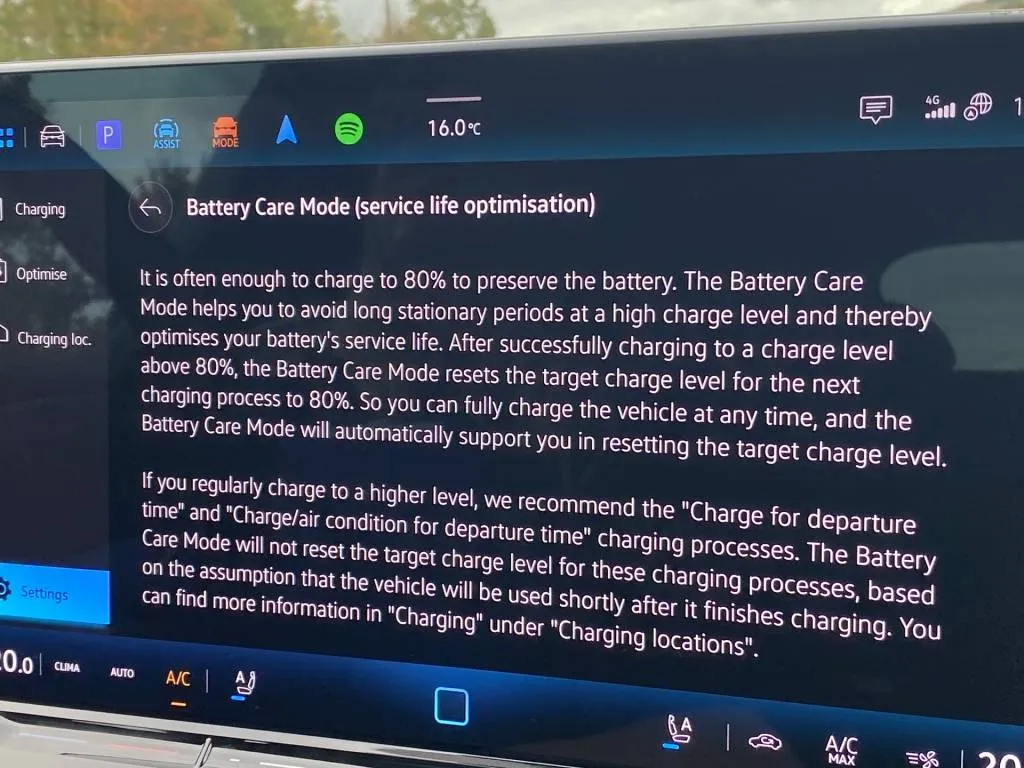
2025 Volkswagen ID.7
The ID.7 won’t have bidirectional charging in the U.S. and it can’t charge as fast as the Hyundai Ioniq 6. At 175 kw on a DC fast charger, the ID.7 battery charges from 10 to 80% in 28 minutes. It also has an 11.0-kw onboard charger for 240-volt home charging, but VW didn’t provide these charge time estimates for the U.S. market.
As more electric vehicles enter the market, most of them being marketed as crossovers, the ID.7 serves as a refreshing reminder that an electric sedan with a hatch can be an efficient and quiet cruiser with all kinds of creature comforts.
Volkswagen paid for airfare and lodging for Motor Authority to present this firsthand report.

